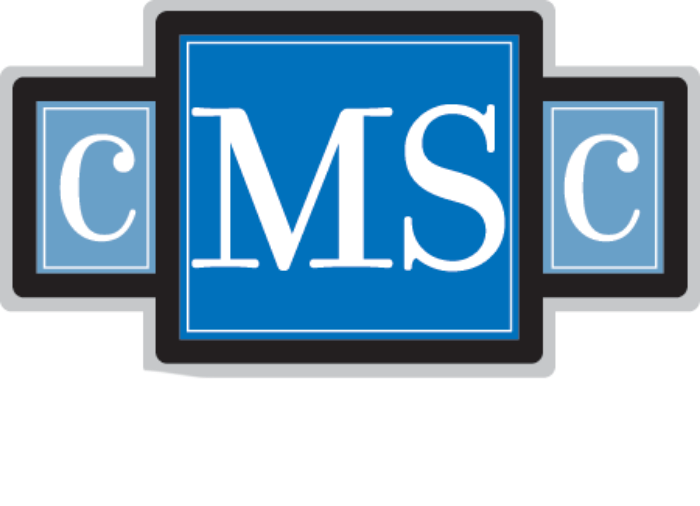Practice Points
- Fall risk in multiple sclerosis (MS) is related to multiple factors, including motor and cognitive deficits. Tests involving forward walking were shown to be of limited sensitivity in detecting fall risk.
- Backward walking speed is a reliable predictor of falls in other neurologic populations, and we previously showed that backward walking speed differentiates people with MS who fall from people with MS who do not fall better than traditional measures.
- Findings from this study suggest that the relationship between backward walking speed and falls is independent of performance on cognitive tests of information processing speed and visuospatial memory.
- Backward walking could represent a quick, simple, and sensitive fall prediction tool in MS, although this needs to be confirmed in further studies.
Multiple sclerosis (MS) is a progressive neurologic disease associated with inflammation, demyelination and axonal damage that leads to debilitating motor and cognitive impairments.1 Consequently, injurious falls are common in persons with MS, with more than 50% of individuals experiencing a fall in a 3-month period.2 Falls in MS are associated with decreased quality of life (activity curtailment and social isolation)2,3 and greater cost to society (increased demand on health care resources).4
Current fall risk measures rely on forward walking (FW) speed,5 balance,5 and past falls4; however, these measures exhibit limited sensitivity to predict fall risk,6–8 which may be attributed to their inability to detect subtle underlying impairments that are linked to falls, including motor and cognitive dysfunction. At present, a simple and sensitive fall detection measure remains unidentified for persons with MS.4
Substantial evidence supports backward walking (BW) velocity as a reliable fall prediction measure in the elderly and other neurologic populations.9–11 Recently, our laboratory examined the relationship between BW and falls in persons with MS to determine what clinical measures of walking and disability most strongly and uniquely differentiate those with MS who fall from those with MS who do not fall.5 Velocity of BW exhibited the highest effect magnitude and specificity in differentiating the 2 groups compared with standard clinical methods. The present findings emphasize the importance of examining BW as a quick, simple, and sensitive fall prediction tool in persons with MS. However, critical gaps in knowledge remain in our understanding of BW’s ability to sensitively detect falls in persons with MS, and it remains unclear whether functional domains commonly affected by MS may modify the sensitivity of BW as a fall risk assessment in MS.
Backward walking is a complex, novel task requiring increased postural control, lower extremity strength, and sensory and cognitive demands,12,13 all of which are negatively affected by and related to falls in MS.14,15 The relationships between BW, motor function, and falls in persons with MS are established,5,16–18 yet the relationship between BW, cognitive function, and falls in persons with MS is unknown. Previous MS research demonstrates connections between complex motor task performance and the function of specific cognitive domains, namely, information processing speed (IPS) and visuospatial memory (VSM).19,20 Similarly, our laboratory has shown that BW correlates with IPS21 and VSM (N. Fritz, PhD, DPT, PT, NCS; M. Atalla, BS; M. Nitta, BS; unpublished data; 2018). However, the aforementioned cognitive studies did not examine falls. Thus, the relationship between BW, cognitive function, and falls remains unknown in persons with MS. This leaves a critical gap in knowledge regarding cognitive mechanisms underlying BW’s ability to detect falls.
Based on published preliminary data, we hypothesized that the relationship between BW velocity and falls is conditional on an individual’s IPS, and a secondary hypothesis tested VSM (Figure 1A). Evidence in support of these hypotheses is the critical first step in establishing a cognitive framework aimed at characterizing neurobiological processes relevant to BW and its clinical application in the assessment of fall risk and targeted fall prevention therapies for persons with MS.
Methods
Study Participants
A convenience sample of 38 participants with a neurologist-confirmed diagnosis of relapsing-remitting MS was recruited from the MS clinic at Wayne State University in Detroit, Michigan, and from local MS support groups of the greater Detroit area. All participants provided written informed consent, and the research protocol was approved by the Wayne State University institutional review board. Individuals with MS were eligible to participate if they were between 18 and 75 years old, stable on immunomodulatory therapy (if applicable) for at least 3 months before the beginning of the study, ambulatory with or without physical assistance, and able to follow study-related commands. Exclusion criteria included MS exacerbation within the past 8 weeks, corticosteroid use within the past 30 days, and acute orthopedic or other neurologic conditions that would interfere with walking.
Data Collection
Demographic data were collected, including age, sex, body mass index, disease severity (using the Patient-Determined Disease Steps [PDDS] scale), and symptom duration.
Walking
The FW and BW performance was evaluated using a 16-ft GAITRite electronic walkway (CIR Systems, Inc). The GAITRite electronic walkway is equipped with sensors organized in a gridlike pattern that record footfalls in real time and is reliable and valid for use in MS.22 The GAITRite calculates spatiotemporal measures of gait and individual step parameters. Participants were instructed to walk at their quickest and safest speed for FW trials, which mimics the conditions of the Timed 25-Foot Walk test. Participants were instructed to walk at a comfortable, safe pace for BW trials, following the methods of our laboratory and others.11,21 Four trials were recorded for each condition, and the data were averaged. Participants received instruction to look ahead rather than at their feet, wore a gait belt, and were accompanied by a research assistant to ensure safety and minimize path deviations on all trials.
Cognition
Processing speed was assessed using the Symbol Digit Modalities Test (SDMT). Participants received a key with 9 numbers each corresponding to a symbol and were asked to determine the number belonging with a series of symbols using this key. The score is the number of correct answers in 90 seconds. The SDMT is validated and reliable in MS to analyze IPS.23 Visuospatial memory was assessed using the Brief Visuospatial Memory Test–Revised (BVMT-R). Participants are shown 6 simple figures arranged in a 2×3 matrix on 8×11 paper for 3 consecutive 10-second trials. After each trial, participants were asked to draw as many shapes as accurately as possible and in the correct location. The BVMT-R demonstrates good psychometric properties and high reliability in MS.24
Falls
Falls were measured retrospectively: Participants were asked, “How many times have you fallen in the last month?” and answered with a number. Falls were defined as “unexpected events that resulted in an unintentional landing on the ground or a lower surface.”25
Analytic Approach
All statistical analyses were performed using IBM SPSS Statistics for Windows version 25.0 (IBM Corp). We chose, a priori, to evaluate IPS and VSM because both domains are primarily affected by MS and have been linked to BW velocity and falls, separately, in persons with MS.5,15 To evaluate the hypothesis that the relationship between BW velocity and falls is moderated by cognition, we used hierarchical regression modeling. The model’s first step used the main effects of BW and cognitive function to predict the number of falls, and significantly increased variance was used in the second step with the addition of an interaction term to test the moderation hypothesis. Continuous predictors were mean centered before model estimation. For each cognitive domain tested, we ran 1 model for BW and 1 model for FW, resulting in 4 total models; all significance testing was adjusted for multiple comparisons (Bonferroni corrected α = 0.01). Covariates for all analyses included age and disease severity as measured using the PDDS scale.
Results
Thirty-eight participants (4 men and 34 women) with relapsing-remitting MS participated in this study. The mean ± SD patient age was 50.4 ± 9.2 years, symptom duration was 16.9 ± 11.8 years, and PDDS scale score was 3.2 ± 4 Most of the participants (86.8%) were taking disease-modifying therapies, and 39.5% used walking devices during testing (Table 1). There was no statistical evidence to suggest that IPS or VSM moderates the relationship between BW velocity and falls (Figure 1). In the first BW model (A1–2), BW velocity, IPS, and covariates (age and disease severity) significantly predicted the number of falls (R 2 = 0.301; P = .016) (Figure 1B). However, IPS did not change the relationship to BW velocity (ΔR 2 = 0.013; P > .1) (Figure 1C). In the second BW model (B1–2), BW velocity, VSM, and covariates also significantly predicted the number of falls (R 2 = 0.332; P = .008) (Figure 1D). However, VSM did not change the relationship to BW velocity (ΔR 2 = 0.001; P > .1) (Figure 1E). Both FW models (data not shown) for IPS and VSM generated comparable results.
Discussion
This study’s critical finding was that the relationship between BW and falls was not dependent on IPS or VSM in this limited sample of persons with MS. Previous studies in MS acknowledge the link between deficits in complex motor tasks (ie, BW) and dysfunction in discrete cognitive domains (ie, IPS and VSM,19,20 which have also been linked to fall risk in MS6); however, falls are multifactorial and complex events. Therefore, in addition to cognition, many disease-driven (sensory dysfunction, muscle weakness, fatigue, spasticity) and/or environmental factors may influence the relationship between BW and falls in persons with MS. In addition, the average disability level of the sample was 3.2 (ie, low disability), as reflected by the PDDS scale score, and the average FW velocity was 1.6 m/s, which is indicative of low fall risk according to clinically meaningful cutoff speeds26 (Table 1). Thus, the lack of cognitive moderation observed in this sample may be attributed to relatively low overall disability and cognitive dysfunction. Alternatively, if no conditional effects are observed in future studies with a larger sample size, we can interpret BW as a sensitive fall risk tool across patients with MS, regardless of possible comorbid cognitive impairment.
Another critical finding is that the combination of BW velocity, cognitive function, and covariates significantly predicted the number of falls, consistent with previous literature in which BW has been linked to cognition16,21 and falls in persons with MS.5,18 However, the present findings provide only a limited snapshot of the factors that predict fall risk in persons with MS and do not provide sufficient detail into whether specific cognitive mechanisms underlie BW’s ability to predict falls. For example, we used only single measures of IPS (ie, SDMT) and VSM (ie, BVMT-R) when additional technology-adapted versions of these assessments exist to sensitively probe these discrete domains.27 Notably, the SDMT and BVMT-R, both part of the Brief International Cognitive Assessment for MS battery, were recently reported to demonstrate high sensitivity to cognitive impairment.28 Previous work in MS also demonstrates that IPS is the foundation for high-level cognitive processes because it affects downstream domains,29 yet, similar to all symptoms of MS, cognitive impairment is heterogenous in severity, progression, and the specific domains affected.30 Thus, examining and controlling for impairment in other domains primarily affected by MS is critical to develop a complete cognitive framework to support the clinical utility of BW as a sensitive fall detection tool in MS.
Study Limitations
In this convenience sample, we relied on retrospective fall reports, which are subject to inaccuracy given the high prevalence of memory problems in persons with MS.3 Our future work will use wrist-worn activity sensors to report falls, establish the predictive validity of BW as a fall risk marker in MS, and control for physical activity levels. Next, we recognize that additional domains of cognition commonly affected by MS (ie, executive function and attention) and their relative influence on the relationship between BW and falls should be examined. This study did not incorporate neuroimaging techniques to better understand the contribution of motor and cognitive brain regions to BW and subsequent fall risk. Our future work will leverage innovative MRI techniques specific to myelin (ie, myelin water imaging) to develop a neurobiological basis supporting the clinical utility of BW as a fall detection measure in MS.
Conclusions
The relationship between BW velocity and falls was not conditional on IPS or VSM in this small sample of persons with MS. Confirmation of these results by larger-scale studies is warranted to understand whether an interaction between cognition and BW in predicting falls reflects underlying neurocognitive architecture or if BW’s ability to detect falls is not confounded by comorbid impairments in IPS or VSM. Future work examining additional cognitive domains affected by MS (ie, executive function and attention), prospective falls, and neuroimaging of motor and cognitive brain regions is needed to characterize neurobiological processes relevant to BW and its clinical application in the assessment of fall risk in persons with MS. Ultimately, advancements in this work will pave the way for sensitive fall detection measures and targeted fall prevention therapies, grounded by neuroscience, to improve clinical outcomes for persons with MS.









